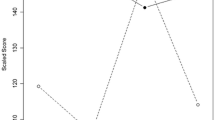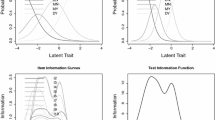Abstract
There is an ongoing debate in the student evaluation of teaching literature about whether an overall rating or factorial dimensions of teaching effectiveness should be used in personnel decisions. Marsh and his colleagues have advocated the use of a weighted average approach to computing overall evaluations. A policy-capturing experiment was carried out where students in three different instructional contexts made overall evaluations of hypothetical instructors based on a manipulation of the teaching factors in Marsh's SEEQ. The results indicated (1) amount learned was consistently the most important factor affecting overall evaluations; (2) course difficulty was consistently the least important factor affecting overall evaluations; and (3) there was a strong similarity among the three groups in the relative importance of the various teaching factors in arriving at an overall evaluation. The implications of this research are discussed, as well as directions for future research.
Similar content being viewed by others
References
teachers themselves, current and former students, colleagues, administrators, and external (neutral) observers.Research in Higher Education 30(2): 137–194.
Feldman, K. A. (1989b). The association between student ratings of specific instructional dimensions and student achievement: Refining and extending the synthesis of data from multisection validity studies.Research in Higher Education 30(6): 583–645.
Franklin, U., and M. Theall (1989). Rating the readers: Knowledge, attitude, and practice of users of student ratings of instruction. Paper presented at the annual meeting of the American Educational Research Association, San Francisco.
Frey, P. W. (1973). Student ratings of teaching: Validity of several rating factors.Science 182: 83–85.
Frey, P. W. (1974, February). The ongoing debate: Student evaluation of teaching.Change, pp. 47–49.
Frey, P. W. (1978). A two-dimensional analysis of student ratings of instruction.Research in Higher Education 9(1): 69–91.
Frey, P. W., and B. R. Flay (1978).A Cusp Catastrophe Model of Evaluation Person Perception with an Application to Student Ratings of Instruction. Evanston, IL: Northwestern University.
Howard, G. S., C. G. Conway, and S. E. Maxwell (1985). Construct validity of measures of college teaching effectiveness.Journal of Educational Psychology 77(2): 187–196.
Marques, T. E., D. M. Lane, and P. W. Dorfman (1979). Toward the development of a system for instructional evaluation: Is there consensus regarding what constitutes effective teaching?Journal of Educational Psychology 71(6): 840–849.
Marsh, H. W. (1977). The validity of students' evaluations: Classroom evaluations of instructors independently nominated as best and worst teachers by graduating seniors.American Educational Research Journal 14(4): 441–447.
Marsh, H. W. (1982). SEEQ: A reliable, valid, and useful instrument for collecting students' evaluations of university teaching.British Journal of Educational Psychology 52(1): 77–95.
Marsh, H. W. (1983). Multidimensional ratings of teaching effectiveness by students from different academic settings and their relation to student/course/instructor characteristics.Journal of Educational Psychology 75(1): 150–166.
Marsh, H. W. (1984). Students' evaluations of university teaching dimensionality, reliability, validity, potential biases, and utility.Journal of Educational Psychology 76(5): 707–754.
Marsh, H. W. (1987). Students' evaluations of university teaching: Research findings, methodological issues, and directions for future research.International Journal of Educational Research 11(3): 253–388.
Marsh, H. W. (1989). Responses to reviews of students' evaluations of university teaching: Research findings, methodological issues, and directions for future research.Instructional Evaluation 10: 5–9.
Marsh, H. W. (1991a). Multidimensional students' evaluations of teaching effectiveness: A test of higher-order structures.Journal of Educational Psychology 83(2): 285–296.
Marsh, H. W. (1991b). A multidimensional perspective on students' evaluations of teaching effectiveness: Reply to Abrami and d'Apollonia (1991).Journal of Educational Psychology 83(3): 416–421.
Marsh, H. W., H. Fleiner, and C. S. Thomas (1975). Validity and usefulness of student evaluations of instructional quality.Journal of Educational Psychology 67(6): 833839.
Marsh, H. W., and M. Bailey (1993). Multidimensional students' evaluations of teaching effectiveness: A profile analysis.Journal of Higher Education 64(1): 1–18.
Marsh, H. W., and M. J. Dunkin (1992). Students' evaluations of university teaching: A multidimensional perspective. In John. C. Smart (ed.),Higher Education: Handbook of Theory and Research, vol. 8, pp. 143–233. New York: Agathon Press.
Marsh, H. W., and D. Hocevar (1984). The factorial invariance of students' evaluations of college teaching.American Educational Research Journal 21(2): 341–366.
Marsh, H. W., and D. Hocevar (1991). The multidimensionality of students' evaluations of teaching effectiveness: The generality of factor structures across academic discipline, instructor level, and course level.Teaching & Teacher Education 7(1): 9–18.
Marsh, H. W., and J. U. Overall (1980). Validity of students' evaluations of teaching effectiveness: Cognitive and affective criteria.Journal of Educational Psychology 72(4): 468–475.
Marsh, H. W., J. U. Overall, and S. P. Kesler (1979). Class size, students' evaluations, and instructional effectiveness.American Educational Research Journal 16(1): 57–70.
Marsh, H. W., and L. Roche (1993). The use of students' evaluations and an individually structured intervention to enhance university teaching effectiveness.American Educational Research Journal 30(1): 217–251.
Seldin, P. (1991).The Teaching Portfolio. Bolton, MA: Anker Publishing Company, Inc.
Author information
Authors and Affiliations
Rights and permissions
About this article
Cite this article
Ryan, J.M., Harrison, P.D. The relationship between individual instructional characteristics and the overall assessment of teaching effectiveness across different instructional contexts. Res High Educ 36, 577–594 (1995). https://doi.org/10.1007/BF02208832
Received:
Issue Date:
DOI: https://doi.org/10.1007/BF02208832




